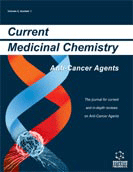Abstract
The quiescent vascular system in the adult body represents the balanced net outcome of overproduction of endogenous angiogenesis inhibitors and reduced levels of angiogenic factors. While these inhibitors are expressed under physiological conditions, they are also generated in association with tumor growth. Angiostatin is such a specific angiogenesis inhibitor produced by tumors. It inhibits primary and metastatic tumor growth by blocking tumor angiogenesis. Encouraged by its potent anti-tumor activity, angiostatin is in clinical trials for cancer therapy. Angiostatin contains the first four triple loop structures, known as kringle domains, of plasminogen. The disulfide bond-linked kringle architectures are essential for the antiangiogenic activity of angiostatin. Based on this initial finding, recent work shows that kringle fragments of several other proteins also inhibit angiogenesis. Thus, kringle domains may provide a structural basis for identification of novel angiogenesis inhibitors. Surprisingly, most kringles only inhibit angiogenesis when cleaved as fragments from their parental proteins that lack antiangiogenic activity. These findings suggest that they are cryptic fragments hidden in large protein molecules. Thus, proteolytic processing plays a critical role in down regulation of angiogenesis. The kringle structure may provide the first example of a conserved architecture that specifically inhibits blood vessel growth. This review will focus on the structural and functional relationships of kringle domains in regulation of angiogenesis and tumor growth.
 6
6

















